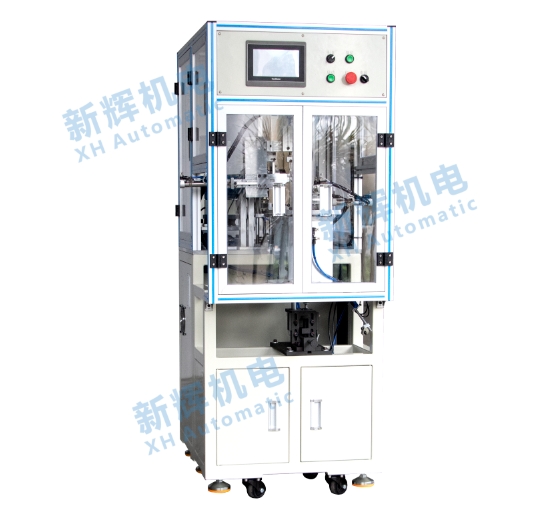What are the common sensor failures and their solutions for motor motor rotor automatic spring clamping machine?
Motor motor rotor automatic clamping spring machine common sensor failure and its solution are as follows:
1, position sensor failure
l Failure phenomenon: inaccurate detection of the rotor position, resulting in the installation of the wrong position of the spring or machine action is not coordinated. For example, the sensor at the discharge station does not detect the rotor, so that the rotor can not be carried to the spring playing station.
l Failure causes:
The sensor is installed in the wrong position, such as offset, loose, etc., affecting the detection accuracy.
The sensor is contaminated by dust, oil, etc., resulting in abnormal signal transmission.
After long-term use, the internal components of the sensor are aging or damaged.

l Solution:
Re-adjust the installation position of the sensor to ensure that it is accurately aligned with the detection target, and tighten the mounting screws.
Clean the surface of the sensor regularly to remove impurities such as dust and oil, which can be wiped with a clean cloth or special cleaner. l Solution.
Replace the aging or damaged sensor components.
2、Material sensor failure
l Failure phenomenon: unable to accurately detect the presence or absence or quantity of material, resulting in insufficient or excess material supply. For example, the material sensor of the bearing feeding device fails, resulting in the bearing not being supplied in time or oversupplied 3.
l Cause of failure:
Poor contact between the sensor and the material, or the shape and size of the material do not meet the detection requirements of the sensor.
The sensitivity of the sensor is not set reasonably, too high or too low will affect the detection result.
The electrical connection line is loose, broken or short-circuited, so that the sensor signal can not be transmitted normally.
l Solution:
Check the contact between the sensor and the material, and adjust the detection method of the sensor according to the characteristics of the material or replace the appropriate sensor.
Re-calibrate the sensitivity of the sensor, through the actual test and adjustment, so that it can achieve excellent detection results.
Check and repair the electrical connection line to ensure that the line is firmly connected, no breaks, short-circuit phenomenon, you can use a multimeter and other tools for testing.
3、Pressure sensor failure
l Failure phenomenon: During the installation of the card spring, the pressure value cannot be detected accurately, resulting in the installation of the card spring is not solid or damage to the rotor.
l Failure causes:
The pressure sensing element of the sensor is damaged and cannot sense the pressure change normally.
The connecting piping is clogged, leaking or the joints are loose, affecting the accuracy of pressure transmission.
Changes in ambient temperature, humidity and other factors, resulting in zero drift or sensitivity changes of the sensor.
l Solution:
Replace the damaged pressure sensing element or the entire pressure sensor.
Check and clean the connecting piping, repair the leaking parts, and tighten the joints to ensure the stability of pressure transmission.
Regular calibration of the sensor, according to changes in environmental conditions to adjust the zero point and sensitivity in a timely manner to ensure measurement accuracy.
4, photoelectric sensor failure
l Failure phenomenon: Misjudgment or failure to detect objects, affecting the automation process of the machine. For example, in the process of rotor handling, the photoelectric sensor can not accurately detect the position of the rotor, resulting in abnormal handling action 2.
l Cause of malfunction:
The light source or receiver of the sensor is damaged and cannot transmit or receive light signals properly.
There is dust, oil or other covering on the surface of the sensor, which hinders the transmission of the light signal.
The ambient light is too strong or too weak, which interferes with the normal operation of the sensor.
l Solution:
Replace the damaged light source or receiver components. l Solution.
Clean the surface of the sensor, remove obstructions, and keep the optical components clean.
According to the ambient light conditions, adjust the sensitivity of the sensor or take shading measures, such as installing a light shield, to reduce the interference of ambient light.
※ If the above ways and means still can not solve the equipment failure, please contact Xinhui Electromechanical Equipment Co., Ltd. technical specialists through the page chat tool to seek help.







